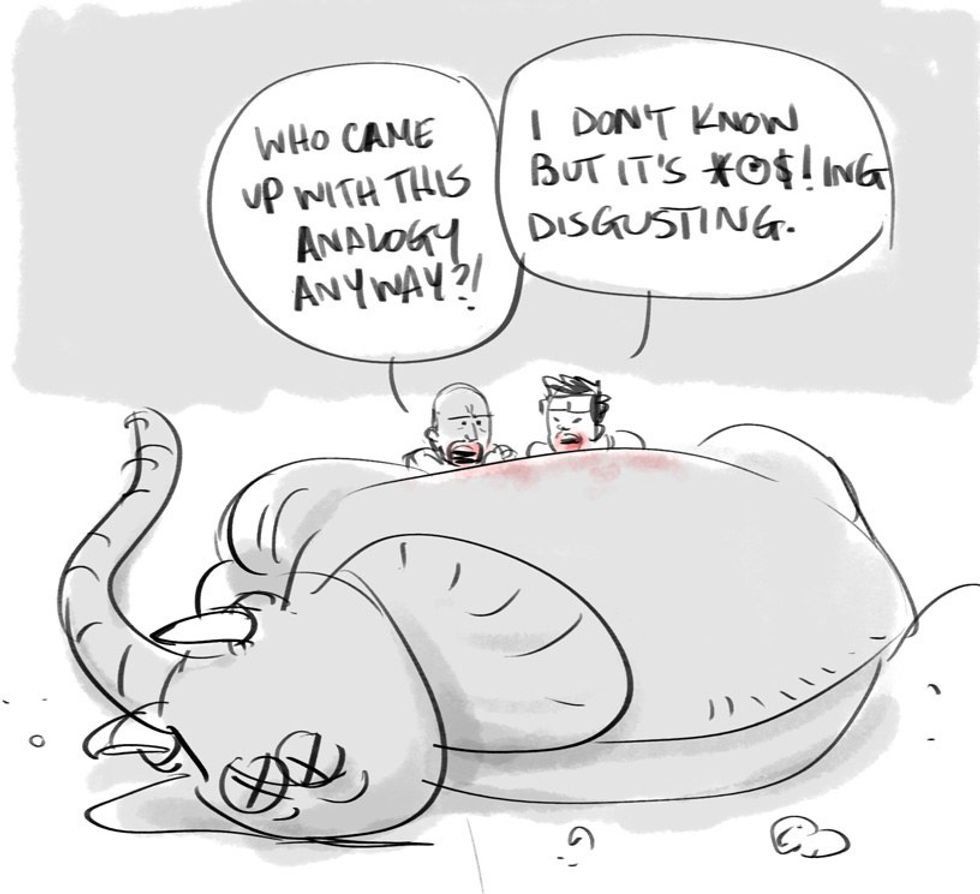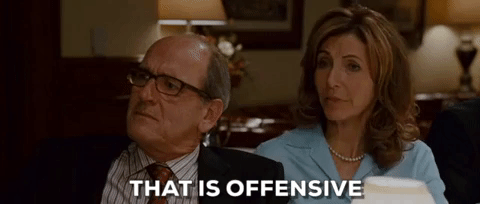Popular music has evolved along with the changing social views of every generation, but just like many other long established industries, the music industry has been governed by the white patriarchy. Although this has been the case for many centuries, the slow progression of change has made its mark in music. From the Blues’ reflection of Black independence to the rejection of social norms and the mainstream reflected by the punk rock movement; these transitions in music are very important when observing social attitudes. This analysis will address the expression of male homosexuality in 21st century pop music through the comparison of the artistic themes in the music and music videos of Sam Smith and Troye Sivan as well as their form self-expression through social media.
Although sexuality is a prominent part of today’s music, it is mostly limited to heterosexuality. In fact, heteronormative references in pop music are virtually impossible to avoid, but the same cannot be said about homosexual references in pop music. When looking at the topic of homosexuality it is important to acknowledge the heteronormative structures that have been present throughout most of society. Along with these imposed norms “the 1950’s saw a backlash from Americans against homosexuality, which had been [categorized] as an illness by psychiatrists”. Taking this into consideration it is no surprise that direct references to homosexuality in pop music only began to appear in the late 1900’s.
At this point in history the homophile and Gay Liberation movements were growing, and this growth was reflected through the emergence of artists such as Michael Cohen, who was among the first to address explicitly gay themes in his music. According to Cindy Boucher, Kathy Fire’s "Songs of Fire: Songs of a Lesbian Anarchist" was to some degree the lesbian counterpart of Cohen’s "What did you Expect?" Both of these albums expressed a dark, angry and protest centered themes. These types of themes could be considered common especially because of the oppressive environment that the LGBT community endured, but social changes gradually occurred.
The 21st century saw an increase in homosexually themed pop music. Among the few homosexual references in the music industry most of them have been put forward by female artists. Artists such as Brittany Spears, Lady Gaga, Katy Perry, and Halsey have rejected the heteronormative framework that encompasses the industry. These artists have released music and portrayed an image of female bisexuality/homosexuality that appeals to many. With songs such as “Poker Face” which makes subtle references to Lady Gaga’s bisexuality and “I Kissed a Girl” by Katy Perry reaching the top of the charts, it is obvious that there is a big discrepancy in the representation of homosexuality as a whole.
Although homosexual representation is currently present in the music industry, there are huge gaps between the gender representation of homosexuality. This may be due to a few factors. The first factor consists of the lack of openly gay male artists in the industry. Without the presence of openly gay male artists the representation of male homosexuality is lowered. The second factor would be due to the idea of gay panic. In his article “We don’t wear tight Clothes’: Gay panic and queer style in contemporary hip hop,” Joel Penney addresses gay panic within hip-hop by stating that gay panic is due to the fear of queer style influence in a genre of music in which black men are made to pass off as hyper-masculine. Although the concept of the hyper-masculine black identity is deeply rooted in cultural history, the general idea of a patriarchal system of oppression against male homosexuality is consistent in both hip-hop and pop music.
Gay panic in pop music also pertains to the idea that any male expression of sexuality that deviates from the heteronormative social structure is cause for alarm. Perhaps that is the reason why some gay male artists choose to avoid referencing their sexuality. According to JD Doyle, “if the work [of a musician] is openly gay lyrically many radio doors are automatically closed to airplay.”This is a very common occurrence even today. In fact, artists face different levels of censorship by part of their record labels as well as the limitations placed by a patriarchal society. Since homosexuality is still a topic that has people divided and the fact that the homosexual community is relatively small compared to their heterosexual counterparts, many artists try to cater to the majority in order to make money and gain a larger fan base.
Despite the challenges, there are some successful gay male musicians that stand out in the pop music industry. Sam Smith is currently one of the most famous gay artists. His soulful vocals drove him to commercial success in 2010. He has had various songs that have become number one hits in both the U.S and the U.K. Similarly, Troye Sivan is another gay artist that has risen to fame around the world. His rise to success started on YouTube and as he began to gain online popularity he released independently produced EPs. The success of his music earned him a contract with EMI music. Both of these artists have gain immense popularity within the music industry yet they express their sexuality in very different ways.
Through a lyrical perspective Troye Sivan and Sam Smith represent their sexuality in completely different ways. Troye’s music as represented by his song "Fun," makes references to his sexuality through the use of lyrics like “Let me take you for a drive, boy… Let’s go have fun. You and me in the old jeep”. After a quick glance at the lyrics of the song it is clear that Sivan is talking about going on a date with a boy. In contrast to Sivan’s direct reference to a homosexual relationship, Sam Smith actively avoids any and all references to his sexuality. In his song "Stay WIth Me," Smith refers to the person he is talking about as “you.” This is also the case in his song "Like I Can," where he says “He’ll never love you like I can.” Although Sam Smith avoids specifying the gender of his love interest in his songs it is important to note that both Sivan and Smith are openly gay artists that use their art in different manners. From this lyrical analysis it clear that Troye Sivan embraces his sexuality more openly while Sam Smith is much more reserved and indirect.
Apart from lyrical composition, artists also use videos to further express themselves and give meaning to their music. According to Marion Leonard, “music video[s] [are] key site[s] through which codes of gender and sexuality are presented and enacted.” In his “Youth” Music video Troye Sivan is seen at a party where he and another male are dancing close together and laying down together. At one point in the video they are about to kiss, but before they do they walk into a room and shut the door. Another scene shows two girls giggling and kissing as the crowd around them dances on. Scenes like these are blatantly homosexual and representative of Sivan’s intention to show his audience that homosexuality is a normal part of everyday life. It is also important to note that the song depicts exactly what the title says “Youth”. Though the use of pastel colors, which are usually associated with femininity and innocence, and a “high school party” environment this video portrays a utopia where being young is about experimenting and experiencing new things.
This idea of innocence, youth and curiosity is also reflected through the different sounds employed in the song. The ethereal timbre of the song fits well with the electronic melody that accompanies it. Other notable aspects are the changing dynamics heard throughout the song. It starts of soft but gradually builds up louder and louder until it reaches the chorus which is accompanied accompanied by a group people chanting “My Youth”. Overall the sounds, imagery and lyrics of this song portray homosexuality as just another part of the human experience at a time in everyone’s youth where the major question in life is “What if?”.
In contrast to Troye Sivan music and imagery, Sam Smith’s music holds a slightly gloomier and soulful feel. In the music video for his song Stay With Me, Smith appears to walk around the streets aimlessly. The video shift back and forth from Sam Smith singing at a church, singing in a bedroom, and singing as he walks through empty streets. Throughout most of the video Smith looks directly at the camera as he sings, suggesting that the person he is talking to is the viewer/listen regardless of their gender. This is especially notable because of the lack of reference to gender in the song. Another aspect of the video that stand out is the fact that the pace seems to follow the somber sound of the song. With a smooth and sober timber that reflects the yearning and sadness of Smith and a slow tempo the video captures the essence of heartache after a breakup.
Although Sam Smith is openly gay his music reflects his personal experiences without giving too much away. In a sense the lack of specificity of gender in his music is much like John Cage’s use of silence. According to Jonathan Katz, John Cage did not use silence as a way of “challenging power [and social structures]” but rather to escape it. In a similar sense Sam smith avoids referencing gender in his music as a way of escaping the stereotypes and misconceptions that result because of being labeled gay. By doing this he presents himself as just another man that has feels love and heartache.
As members of the public eye, Smith and Sivan are in a position of power, influence, and vulnerability. Everything they say, do, and post is subject to public opinion. They share parts of their life through their social media and their post reflect part of themselves as individuals. Through their social media both Smith and Sivan advocate for the LGBT community. Sam Smith post messages that express how proud he is to be able to represent the gay community. Troye Sivan also makes use of his twitter and Instagram to show his support for the gay community but he takes it one step further. The content of his Instagram and twitter reveal that Sivan is more than comfortable challenging gender norms. In one his Instagram pictures Sivan can be seen wearing nail polish, something that is generally thought of as feminine. Sivan also challenges political ideologies through his social media. On February 24th, he posted a still image of his music video “Youth” in which he can be seen holding a hat that says “Make America Gay Again”. This post can be interpreted as a challenge to conservative views as it is a play on words that refers to the slogan of one of America’s leading republican presidential candidates.
After looking at the way Sam Smith and Troye Sivan express themselves through Social media it is evident that their views and forms of sexual expression permeate into their music. On one end Sivan embraces his sexuality as a form of empowerment for himself and others while on the other end, Smith’s expression of his sexuality is much subtler and indirect when it comes to his music. Through his music Smith presents the idea that sexuality does not define a person and that everyone experience love and suffering. In contrast to Smith, Sivan presents the idea that everyone is different and that differences should be accepted as a part of life.
As time goes on and social attitudes towards male homosexuality keeps changing so will the reflection of homosexuality in popular music. Troye Sivan and Sam Smith represent two different sides of the spectrum that is homosexual expression. One artist is more open and direct about his sexuality while the other is much more reserved when it comes to his artistic expression. Either way these two artists challenge the stereotypical views of gay men set forth by the patriarch and previous artists. Their artistic expressions show a different side of male homosexuality. Social view about homosexuality are slowly changing, and it seems as though gay male artists are beginning to challenge stereotypes by taking control of their image in pop music. Although this is a huge milestone it would be interesting to see how gay male artists are influencing other genres of music.







 Photo by
Photo by  Photo by
Photo by 
 Photo by
Photo by 






















